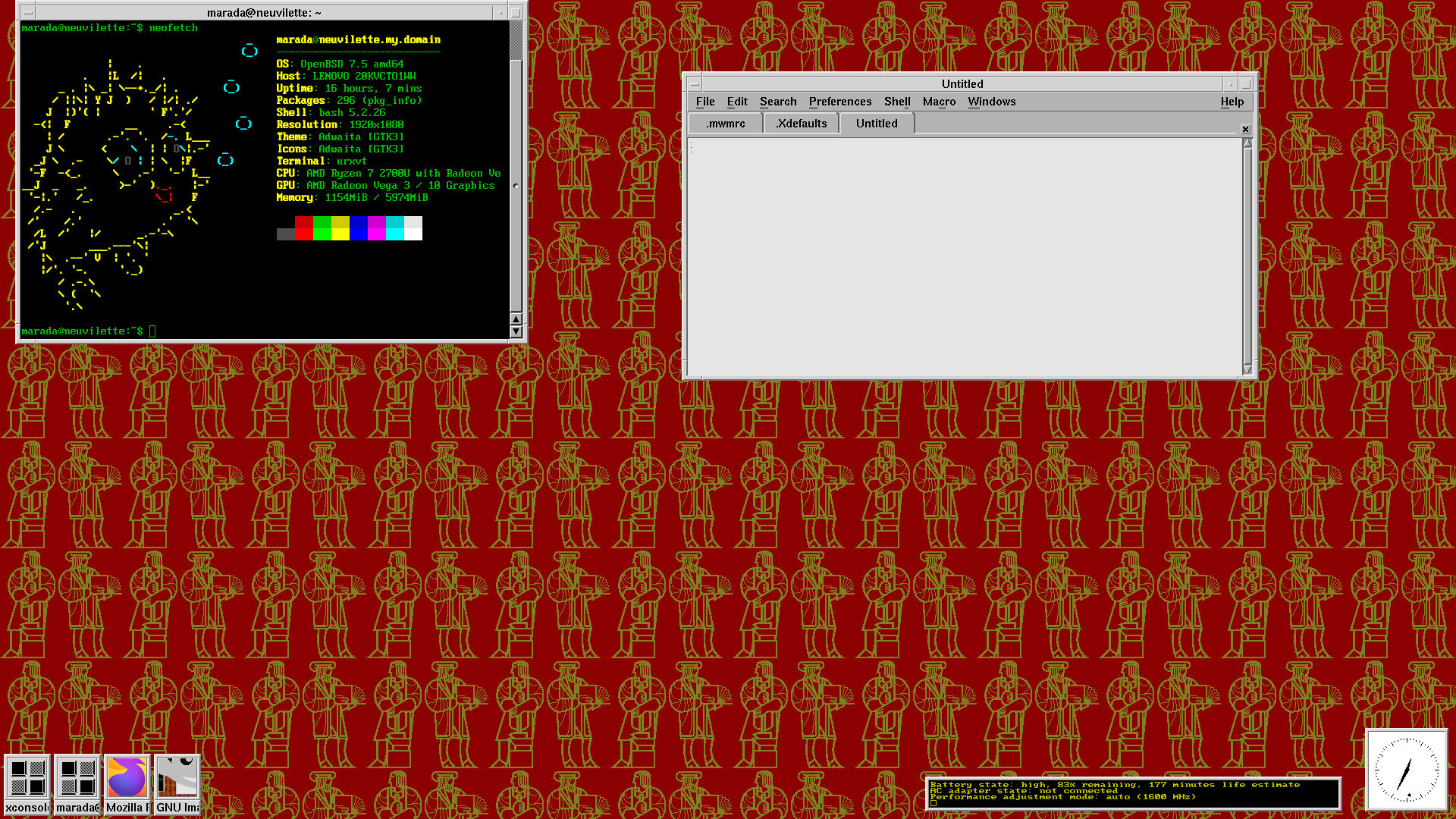Trident TGUI9440 on a VL-bus card. Surprisingly peppy on a 486/66 overclocked to 80.
HakFoo
I was always disappointed that celebrity and character voice packs weren't a thing for the voice-assistant platforms. I'd pay literal ones of dollars for a voice assistant with a Sebastian Michaelis intonation and theming.
Cortana for Windows Phone came closest, I think they did use the same voice actress as the game character.
I doubt they enjoy having their balls in TSMC's vice.
Intel is the only option remotely available to leverage against them.
- Starting from zero will cost bajillions and take decades to get competitive
- Samsung's probably not divisible in a way that makes their fabs buyable
- They can't buy into any of the 7nm/5nm level players in the PRC and fund their modernization due to sanctions
- Does anyone else have sub-10nm at anything buy lab scales?
How about Delete, since I don't see it on the layout.
Or the Most Scroll Lock Ever.
I suspect that democracy is a "good times" system. It works well enough when the problems are either low-stakes or widely agreed upon.
When you get into a world of hard choices-- for example, anything where we have to devalue some existing wealth -- suddenly there's going to be both a lack of consensus (likely manufactured) and leaders too afraid of losing the next vote to pull the trigger.
That's why I expect to see China solve its climate change and housing problems faster than the West. Without the almighty polls lurking in the shadows, they can say "petrol is 100 yuan a litre to discourage its use" or "we're nationalizing second homes and disbursing them to schoolteachers."
Can we start calling Amazon "AliExpress with American characteristics" now?
I can't see how this won't further undermine the value proposition of Prime, as yet more of their inventory is ineligible for "free 2-day shipping."
Goung for the plausible deniability aspect.
Electric grid implodes It was like that when I got there, sir.
Fujifilm successfully repositioned towards other chemistry. I know there's that Eastman spinoff but why wasn't it as successful?
ARM has a high probability of blowing a tire.
They have a complex relationship with their licensees which may try to cause self-sabotage trying to pull more of the money home. See the various licensing fights.
If you don't want or need x86, what does ARM have to offer-- in the long term-- over RISC-V, which is much less coupled to a single firm's caprice? We can assume the gap in performance will continue to shrink ovrr time.
Maybe it's time to re-randomize the map. Six Californias, merge a couple Dakotas, and a new state called "Steve" in the middle of Texas for no good reason.
States seem to be a classic seemed-sensible-in-1790 hack, goofier and less relevant as time goes on. At best you get arbitrage plays, finding the most comfortable jurisdiction for your particular graft. At worst, it seems to be a great line for the scum too stupid and/or crooked to get a federal position to settle at.
I wonder if a UK-style model, where the regional governments are devolved narrow lists of things they can play at government with, would work better.
Some game shows would give the contestant the novelty cheque they were handed at the end as a souvenir. I wonder if they'd do the same for other tokens. 'I want my free spins!'







As a reptile keeper who knows full well they don't know when to stop eating, I find this story charming. I want to feed her a basket of eyes (pre-frozen to kill parasites)
One hour from new classic myth to kawaii. I think that's near Rule 34 turnaround speed.